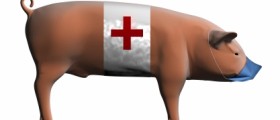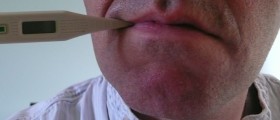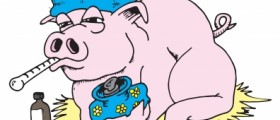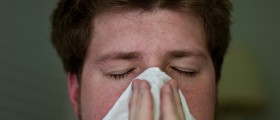
Equine influenza is a common infectious disease of the respiratory tract in horses. Other equine species like ponies, mules, donkeys and zebras can be affected too by this disease. Equine influenza is highly contagious and sometimes can be fatal. Fortunately, preventive vaccine is available. The latest outbreak of equine influenza took place in Australia in August 2007.
Causes of Equine Influenza
Equine influenza is caused by orthomyxovirus equine A type 1 (H7N7) and type 2 (H3N8). Both types can be divided into several subtypes that can cause equine influenza. Equine virus is more stable than human influenza virus.
The disease rapidly spreads among large group of horses by inhalation of respiratory secretions. As the virus enters it damages tissue lining of the respiratory tract leading to death of large areas of the lining tissue or mucosa.
Sometimes, an infected horse can be only a carrier of the illness. This occurs if there is incomplete immune response to equine influenza. In carriers of the influenza, the virus is present but the symptoms are not exhibited. Such horses can transmit the influenza to other horses.
Symptoms of Equine Influenza
Equine influenza is a serious viral infection of the respiratory tract. It has relatively short incubation time of 3-4 days. Equine influenza is characterized by rapid onset of symptoms.
The primary symptom of equine influenza is sudden increase in body temperature. Watery nasal discharge, dry, unproductive cough and swollen lymph nodes under the jaw are present too. An infected horse also exhibits depression and lethargy, labored breathing, clear eye discharge, loss of appetite and reluctance to drink. Other symptoms of equine influenza include swelling in the legs, shivering and reluctance to move. Complications of equine influenza include chronic bronchitis and pneumonia. Pneumonia in old and very young horses can be fatal.Treatment for Equine Influenza
An infected horse must be isolated to prevent spreading of equine influenza. The horse needs complete rest for at least 6 weeks. Although, the animal may recover within a week, 6 weeks are required for reversal of mucosal damage. The stable must be properly ventilated and dust levels kept at minimum. Antibiotics and myolitic agents can be administered to control secondary infections.
Prevention of Equine Influenza
Equine influenza can be prevented with vaccination. The flu immunization is effective for 10 to 15 months. Preventive vaccine is administered in 2 doses, 3 to 6 weeks apart. It is followed by booster shots at 6 to 12 months intervals. Side effects of this vaccine include inflammation at injection site, allergy and general poor well-being.
- www.cdc.gov/flu/other/canine-flu/keyfacts.html
- www.cdc.gov/media/transcripts/t050926.htm
- Photo courtesy of Cgoodwin by Wikimedia Commons: commons.wikimedia.org/wiki/File:Equine_massge.JPG

















Your thoughts on this
Loading...